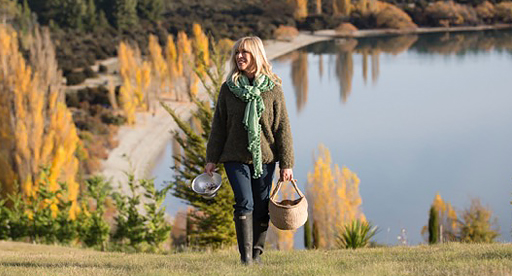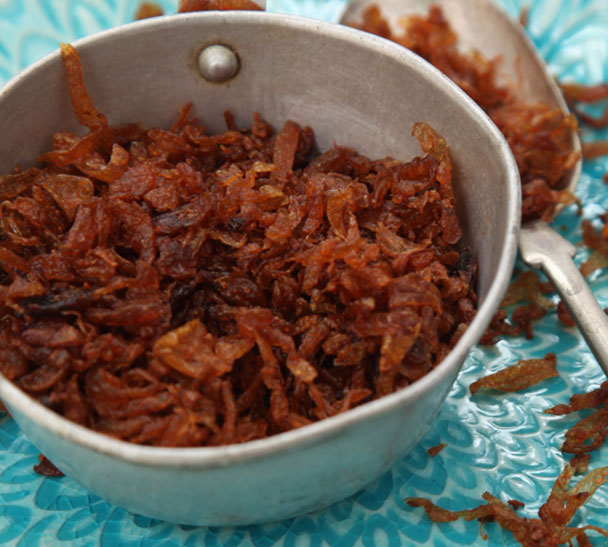
June may not be the coldest month of the year, but the arrival of the solstice on the 21st brings us the shortest day, and with it a welcome turn of the earth’s cycle. From hereon in the days will, slowly but surely, start to lengthen out again, right up until the longest day on the 22nd of December, when it all rolls around yet again.
With day length being so short and temperatures so low at this time of year, there aren’t many things you can plant. However, garlic and shallots are traditionally planted on the shortest day of the year. In cooler areas these bulbs can be planted in early May and planting can continue through to August.
Both garlic and shallots are extremely simple to grow and incredibly satisfying crops that, once harvested in late summer, will keep in storage for many months. I’ve had shallots firm and without any green sprouts a whole two years after harvest.
When it comes to garlic, buy good-quality seed garlic or use corms you have saved, rather than store-bought table garlic as this is likely to have been treated to prevent it sprouting. Garlic likes a soil rich in organic matter such as sheep pellets and Tui Compost. Add a layer of Tui Vegetable Mix and then ideally leave the soil for a day or two, or until the next weekend before planting. This allows the compost to start breaking down and the worms to get active before planting. Be sure to plant the cloves deep enough – if you plant them too shallow they won’t bulb up properly. For a useful guide to planting and growing garlic check out Tui’s garlic growing guide.
Shallots are another favourite for the home gardener. Prized for their fine, sweet onion flavour, they keep much better than regular onions. Shallots like the same soil conditions as garlic so prepare the ground in the same way, but don’t plant the bulbs deep. Shallots form clumps of bulbs above the ground like onions, rather than underground like garlic, so nestle them under the surface with their stem tips just showing above the ground.
Apply Tui Organic Seaweed Plant Tonic to your garlic and shallots monthly right through the season to encourage larger cloves. Both crops need to be kept well watered to produce large bulbs, particularly as the bulbs are starting to form in November and December. Reduce the water once the bulbs are fully formed and the stems start to die back so they can mature and dry a little before harvest.
Day length, or more importantly light, has a key effect on plant growth, as does temperature. Once day length drops below 10 hours (in the south of New Zealand this is from early May through to the end of July; in the north from late May through to till late July) a plant’s growth slows significantly. It’s not until August that plants resume growing vigorously again. How plants grow from this point depends a lot on temperature. In Auckland I can have beetroot bulbing up by late August but here in my southwest-facing Wanaka garden, the growing season kicks in a good six weeks later.
Many plants are incredibly sensitive to day length, with their maturity and seeding cycles responding either to shortening days or to lengthening ones – hence the significance of the solstice when you are planning your plantings.
Most winter vegetables are true biennial vegetables, which means they need a period of winter chilling followed by the longer days and warmer conditions of spring in order to bloom and produce seeds. This process is called vernalisation, from the Latin word vernus, "of the spring".
Vernalisation ensures that reproductive development and seed production occurs in spring and summer rather than in autumn, so the seeds can hit the ground with the right conditions to germinate and grow.
If you were to grow a cabbage in a hothouse without any exposure to cold or shorter light hours, for example, it will keep growing leaves but not flower buds. Typical vernalisation temperatures are between 5 and 10 degrees Celsius.
The list of true biennials – and thus those plants that will bolt in spring – pretty well covers all the winter veg: beets, brussels sprouts, cabbage, carrots, cauliflower, celery, endive, kale, kohlrabi, leek, onion, parsley, parsnip, rutabaga, salsify, silverbeet and turnips. The speed with which they will bolt in spring depends on many factors, including how long they were cold for, as well as the temperature. Basically the idea is to eat your way through them over the winter as, at some point between September and November, they will go to seed.
June is a good month to get the garden in tip-top shape for spring. Piles of old leaves and trimmed prunings need to be disposed of, as they can harbour overwintering bugs and diseases. Add a layer of Tui Mulch & Feed around the base of fruit trees to keep the soil warmer over the winter months and help keep the area weed-free in the spring once temperatures set them growing again.
Birds often struggle for reliable food sources over the winter and setting up a bird feeding station with Tui’s Wild Bird Feeders & Seed range is a simple way to increase the number of birds in your garden. I love standing at the kitchen sink watching the birds happily feeding – it’s easy entertainment and pleasure for the whole family.
If you’ve grown shallots in the past you’ll know how versatile they are in the kitchen, and once you have a jar of crispy shallots in the pantry you’ll be surprised how often you reach for them. They add the finishing touch to Asian soups, salads, curries, rice dishes and vegetable side dishes. Precooking the shallots in milk makes them sweeter and crisper but if you can’t be bothered just skip this bit.
Annabel's Crispy Shallots
Prep time 10 mins
Cook time 40 mins
Makes 1 ½ cups
Ingredients
- 500g shallots, peeled and very thinly sliced
- 4 cups milk
- 4 cups neutral oil
Method
- Place shallots and milk in a pot and bring to a simmer.
- Remove from heat and strain, discarding milk or saving it for use in a savoury sauce.
- Pat shallots dry with paper towels.
- Heat oil to a low sizzle and cook shallots, stirring now and then, until shrivelled and golden (about 40 minutes).
- Scoop out of oil with a slotted spoon and transfer to paper towels to cool and crisp.
- Once crisp, store in an airtight container. They will keep for a couple of weeks and can be refreshed in a hot oven for a few minutes if necessary.
Read more of Annabel's guest blogs here

Post a comment
Annabel Langbein's June Garden Comments
Be the first to write a comment